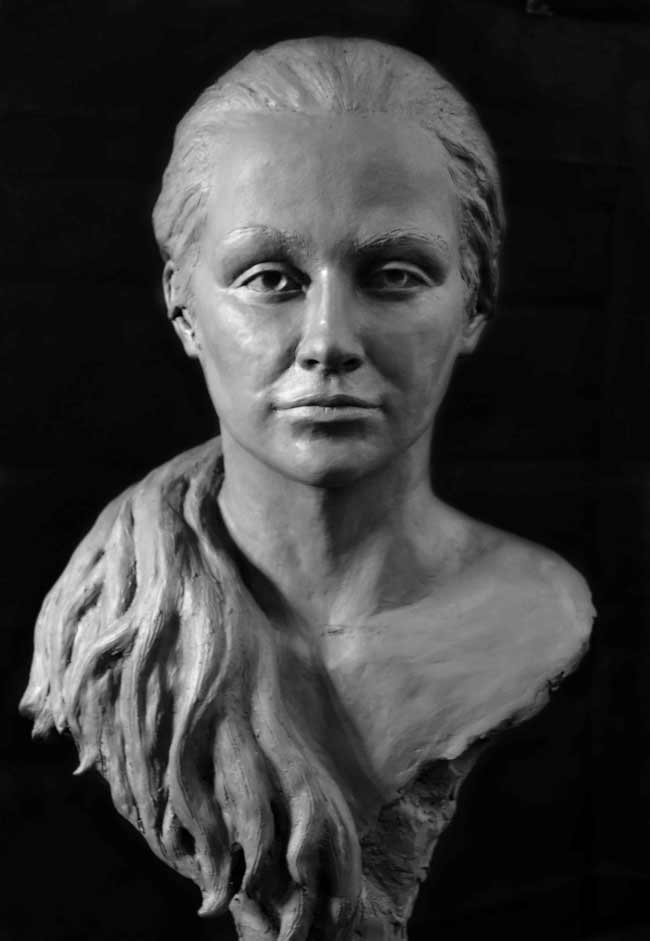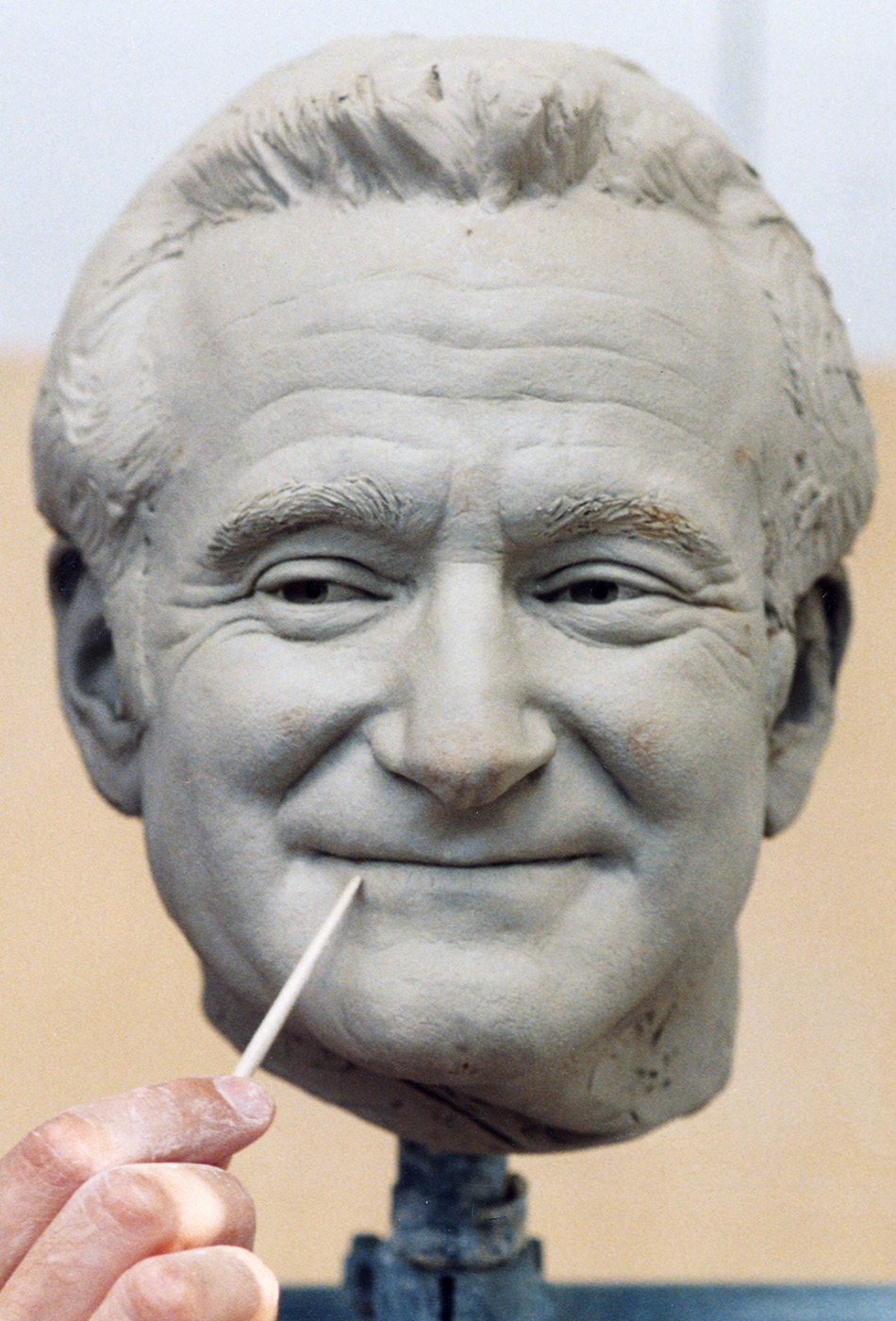Timeless Charm in Bronze: Unveiling the Art of Bronze Sculptures
Wiki Article
The Development of Sculptures: From Old to Modern
The Evolution of Sculptures: From Ancient to Modern.Sculpture, among the earliest forms of art, has actually been an integral part of human civilization for centuries (Robert C Hitchcock Sculptor). From the old civilizations of Egypt and Greece to the modern-day period, sculptures have actually advanced, mirroring adjustments in creative techniques, products, and social impacts. This journey via time traces the growth of sculptures, exploring the changes stylishly, subject, and imaginative expression
Starting with the old world, sculptures crafted from rock and later on bronze captured the significance of deities, rulers, and day-to-day life. The Renaissance period witnessed a rebirth of classical sculpting strategies, as artists sought to emulate the elegant types of ancient Greek and Roman sculptures. In the modern-day age, artists tested conventional boundaries, accepting abstraction and experimentation with brand-new products.

This exploration will explore the varied advancement of sculptures, exposing the abundant tapestry of creative expression across various periods and cultures.
Ancient Sculptures: From Rock to Bronze
Old sculptures transitioned from being sculpted out of rock to being cast in bronze. This shift noted a considerable evolution in the art of sculpture, enabling for higher refinement and information in the completed works. Stone sculptures, while impressive in their own right, were limited by the nature of the product. Rock needed considerable forming and sculpting, commonly leading to an extra simplified depiction of the subject.The intro of bronze as a tool for sculptures produced a revolution in creative expression. Bronze supplied sculptors the chance to develop realistic and complex forms that were not possible with rock. The procedure of casting bronze permitted the creation of numerous duplicates of a sculpture, enabling bigger distribution and preservation of these imaginative work of arts.
The transition from stone to bronze additionally saw a shift in the topic of sculptures. While stone sculptures mainly depicted gods, goddesses, and mythological figures, bronze sculptures began to mirror a wider series of subjects, including everyday individuals and animals. This growth of subject showcased the adaptability and flexibility of the bronze tool.
Renaissance Resurgence: Sculpting in the Classic Design
The Renaissance resurgence of sculpture experienced a resurgence in the timeless design, structure upon the improvements made during the transition from stone to bronze in ancient sculptures. During this duration, musicians sought to recreate the timeless visual and perfects of elegance that were widespread in ancient Greek and Roman sculptures.One of the vital features of the Renaissance revival was the emphasis on naturalism and the human form. Sculptors like Donatello and Michelangelo make every effort to record the anatomical information and expressions of their subjects with extraordinary accuracy. They examined the human body and integrated their monitorings right into their sculptures, leading to natural and sensible depictions.
One more vital element of the Renaissance revival was the exploration of perspective and deepness. Musicians used strategies such as contrapposto, where the weight of the body is changed to one side, producing a feeling of activity and dynamism. They additionally tried out with different products, consisting of marble and bronze, to attain a level of elegance and intricacy in their sculptures.
The timeless design of the Renaissance rebirth had an extensive influence on later periods of art, working as a structure for the advancement of Western sculpture. It brought a restored admiration for the charm and magnificence of the human kind, and its heritage can still be seen in modern sculptures today.
Innovation and the Avant-Garde: Damaging Traditional Boundaries

Among the vital attributes of modernist sculpture was the focus on abstraction. Carvers relocated far from realistic depictions and instead concentrated on recording the essence of the subject with simplified forms and geometric shapes. This separation from conventional representation enabled artists to reveal their emotions and ideas in a more subjective and personal manner.
Moreover, the progressive movement challenged societal norms and conventions, urging musicians to experiment and push the limits of their art - Contemporary Sculptures. Carvers started integrating non-traditional products such as located items, industrial materials, and also natural environments right into their job. This exploration of new products and strategies not just broadened the opportunities for sculpture but likewise challenged the traditional ideas of what might be taken into consideration art
Contemporary Sculptures: Exploring New Materials and Concepts
With a concentrate on exploring new materials and principles, modern sculptures have actually revolutionized the area of art. Artists today are pushing the boundaries of typical sculpture by using cutting-edge products and experimenting with abstract concepts. These sculptures challenge standard ideas of definition, materiality, and form, welcoming visitors to participate in a thought-provoking and brand-new creative experience.Contemporary sculptors are welcoming a vast array of materials, consisting of plastic, glass, steel, and also raw material. Contemporary Sculptures. They are not limited to the conventional tool of stone or clay, allowing for greater freedom of speech and trial and error. This shift towards unique products has actually opened up brand-new possibilities for musicians to create sculptures that are vibrant, interactive, and visually striking
In enhancement to exploring brand-new products, contemporary sculptures likewise delve right into complicated and abstract principles. Musicians are currently exploring motifs such as identity, social problems, and the setting, using sculpture as a powerful medium for social discourse and self-questioning. These sculptures test viewers to assume critically and involve with art on a deeper degree, sparking conversations and provoking emotional reactions.
Worldwide Influences: Sculptural Customs From Around The Globe

In old Egypt, sculptures were created largely for funerary and spiritual purposes. The famous sculptures of pharaohs and gods, such as the Great Sphinx and the bust of Queen Nefertiti, showcase the Egyptians' mastery of stone carving and their idea in the afterlife.
In old Greece, sculpture reached its peak throughout the timeless my latest blog post duration. Influenced by the suitables of harmony, charm, and proportion, Greek sculptures emphasized the human form and celebrated the accomplishments of heroes, gods, and professional athletes. The popular sculptures of Aphrodite of Knidos and the Discobolus exemplify the Greeks' quest of perfection in sculptural art.
In ancient Rome, sculpture served both artistic and political objectives. Bronze Sculptures. Roman sculptures commonly illustrated emperors, generals, and mythological figures, reflecting the power and splendour of the realm. The marble statue of Augustus of Prima Porta and the huge Arch of Constantine are remarkable examples of Roman sculptural accomplishments
Oriental sculptural practices, especially in India, China, and Japan, have also had a profound influence on the advancement of sculptures. Japanese sculptures, affected by Buddhism, highlight simplicity and peace, seen in the calm statues of Buddha and the elegant art of bonsai.
The worldwide influences on sculpture continue to evolve in the modern period. As we look to the future, it is particular that the international impacts on sculpture will certainly proceed to form and redefine this old art form.
Final Thought
In final thought, the advancement of sculptures has seen a shift from ancient stone and bronze functions to the classic resurgence throughout the Renaissance. Today, contemporary sculptures explore new materials and ideas, while additionally attracting motivation from global sculptural practices - Robert C Hitchcock Sculptor.From the old human beings of Egypt and Greece to the modern-day era, sculptures have developed, mirroring modifications in artistic strategies, products, and social impacts.Starting with the ancient world, sculptures crafted from stone and later bronze captured the essence of divine beings, rulers, and daily life.Ancient sculptures transitioned from being carved out of stone to being cast in bronze. While stone sculptures predominantly portrayed gods, goddesses, and mythical numbers, bronze sculptures began to mirror a wider range of subjects, including day-to-day individuals and pets.In verdict, the evolution of sculptures has seen a change from ancient stone and bronze functions to the classical rebirth throughout the Renaissance.
Report this wiki page